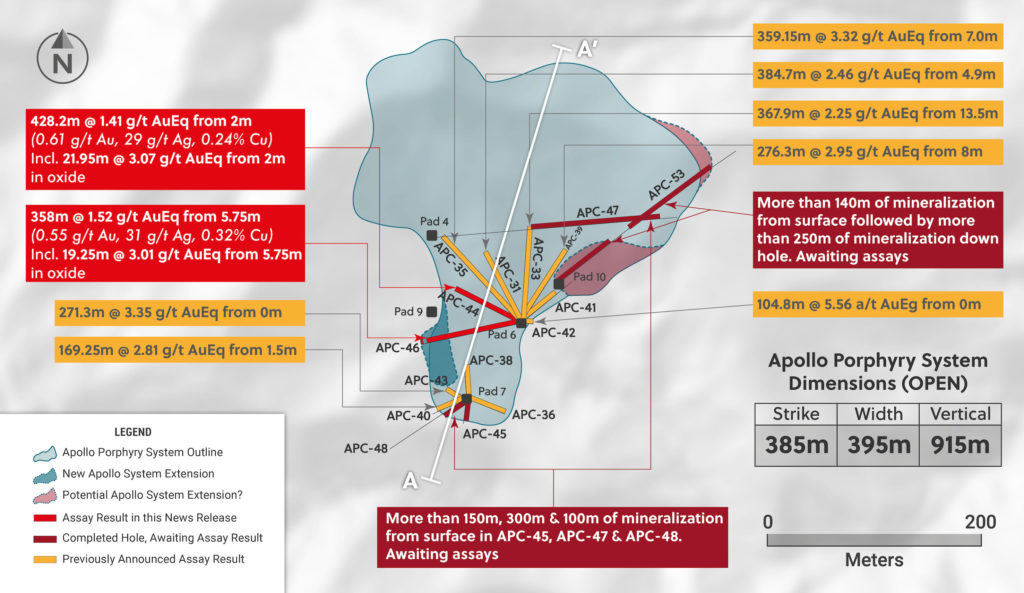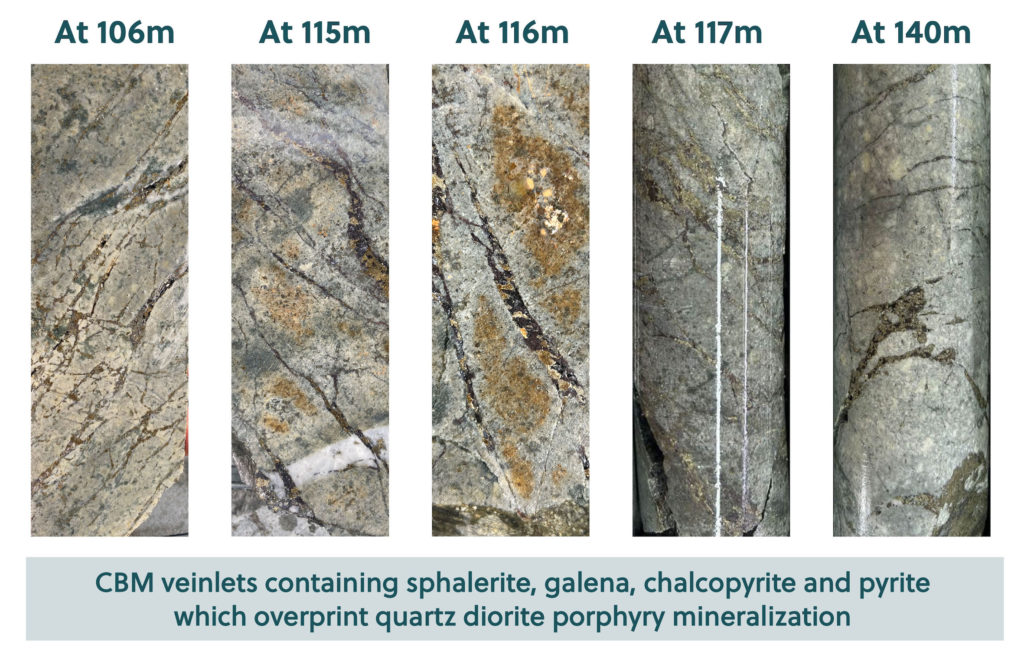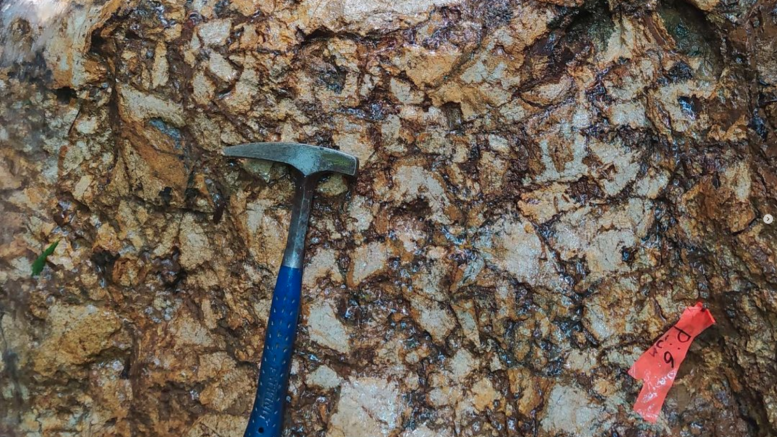Since going public in May 2021, Colombia-focused Collective Mining (TSXV: CNL) has made four notable discoveries, including the Apollo high-grade porphyry system last June.
Its share price has reflected its exploration success – despite investor concerns about political risk in Colombia – with the stock trading up 73% over the past year.
The junior is steered by the same team that was behind Continental Gold, which was bought for $1.4 billion in cash by China’s Zijin Mining in 2020 for its Buritica project in Colombia.
Its current flagship project, the Guayabales high-grade copper-gold-silver porphyry started out as a grassroots surface prospect.
The company intends to continue to grow the deposit’s footprint this year with an aggressive exploration plan, executive president Ari Sussman tells The Northern Miner.
“The challenge at Guayabales is that everything is under cover,” Sussman explains. “We drilled Apollo based on analysis of only a 10-metre surface outcrop, and to date, our deep drilling is describing three mineralizing events, charging up a system that appears to widen towards almost a kilometre depth.”

Sussman says Collective is shifting to the next phase of strategic exploration, seeking to grow the size of mineralization after successfully meeting the first objective of proving the depth continuity of Apollo mineralization from surface.
Globally, porphyries tend to distribute geologically in clusters.
Drilling is ongoing at the site, with three active rigs to be joined by a fourth in June and a fifth in the fall – the latter two expected to work on the third prong of the strategic exploration strategy, which entails making another regional discovery. Sussman says there are six priority step-out targets ready for systematic drill testing.
Apollo is a high-grade, bulk tonnage copper-silver-gold system. It measures 395 by 385 by 915 metres and is open for expansion. Sussman explains it owes its metal endowment to an older copper-silver and gold porphyry system being overprinted by a younger precious-metal-rich carbonate base metal vein system (intermediate sulphidation porphyry veins) within a magmatic, hydrothermal inter-mineral breccia body.
Deep drilling
As part of the ongoing workflow, Collective released on May 16 the assay results from two further deep drill holes into the Apollo target and described visuals from a new investigative drill hole at the Caldas-department (province) project.
According to Collective, hole APC-46 was drilled westward from drill pad six and returned 358 metres grading 1.5 grams gold-equivalent per tonne from 5.7 metres downhole (comprising 0.55 grams gold per tonne, 31 grams silver and 0.32% copper). The hole also returned 19.2 metres at 3 grams gold-equivalent in oxides, and 60.6 metres at 2.7 grams gold-equivalent (1.13 grams gold, 48 grams silver, 0.5% copper) from 153 metres downhole.

Plan view of drilling highlighting assay results of APC-44 and APC-46 and the location of new hole APC-53. Credit: Collective Mining
Sussman explains this hole extended the strike length of the shallow mineralization to the west, with the dimensions now measuring 160 by 130 metres (previously 150 by 130 metres) and bottomed in mineralization in quartz diorite porphyry with the final 7.1 metres averaging 0.9 grams gold-equivalent per tonne in the porphyry.
Hole APC-44 was drilled to the northwest and cut 428.2 metres grading 1.4 grams gold-equivalent per tonne from 2 metres downhole (consisting of 0.6 gram gold, 29 grams silver and 0.24% copper), including 20 metres at 3.1 grams gold-equivalent in oxides, and 18.3 metres at 5.21 grams gold-equivalent from 144.25 metres downhole.
Sussman says visual observations of the core from hole APC-53 provided a pleasant surprise. “Detailed visual logging of drill hole APC-53, which was drilled to the northeast from pad 10, indicates that two potentially significant zones of mineralization were encountered along the hole in what is thought to be a contact zone between the three styles of mineralizing events, including the original porphyry and two distinct brecciation events,” Sussman explains.
In this hole, the company intersected the first zone about 150 metres from the surface. The core comprised intense sheeted carbonate and base metal veins hosted within mineralized quartz diorite porphyry. This is the first time the company has observed such “an intense set” of sheeted carbonate and base metal veins outside the breccia and represents a potentially high-grade target for follow-up drilling.
Since announcing the Apollo discovery hole, the company has drilled 46 holes for about 20,700 metres, which have been assayed. The phase two drilling program started on schedule, with 15 holes completed and results announced.

Eight further holes have been completed at the Apollo system, with assay results for APC-45, APC-47 and APC-48 expected in the near term.
Guayabales is located in a area with adequate transport and hydropower, where 10 other mines, including Aris Resources’ (TSX: ARIS; US-OTC: TPRFF) Marmato project, have completed the permitting process successfully (an application for an expanded operation is pending).
Marmato is the analogue for Guayabales, according to Sussman, and hosts a June 2022 resource just shy of 9 million oz. gold across all categories.
Sussman stresses the jurisdiction is mining-friendly and points to Montreal-based Auxico Resources (CSE: AUAG; US-OTC: AUXIF) receiving an environmental impact assessment approval for its Minastyc rare earths project in Vichada as recently as Apr. 12.
At $5.95 per share on May 17, Collective’s Toronto-listed shares have come off their recent 12-month high at $7.05, with a current market capitalization of $346.9 million.


Be the first to comment on "Discovery-geared Collective pries more porphyry secrets from Guayabales"